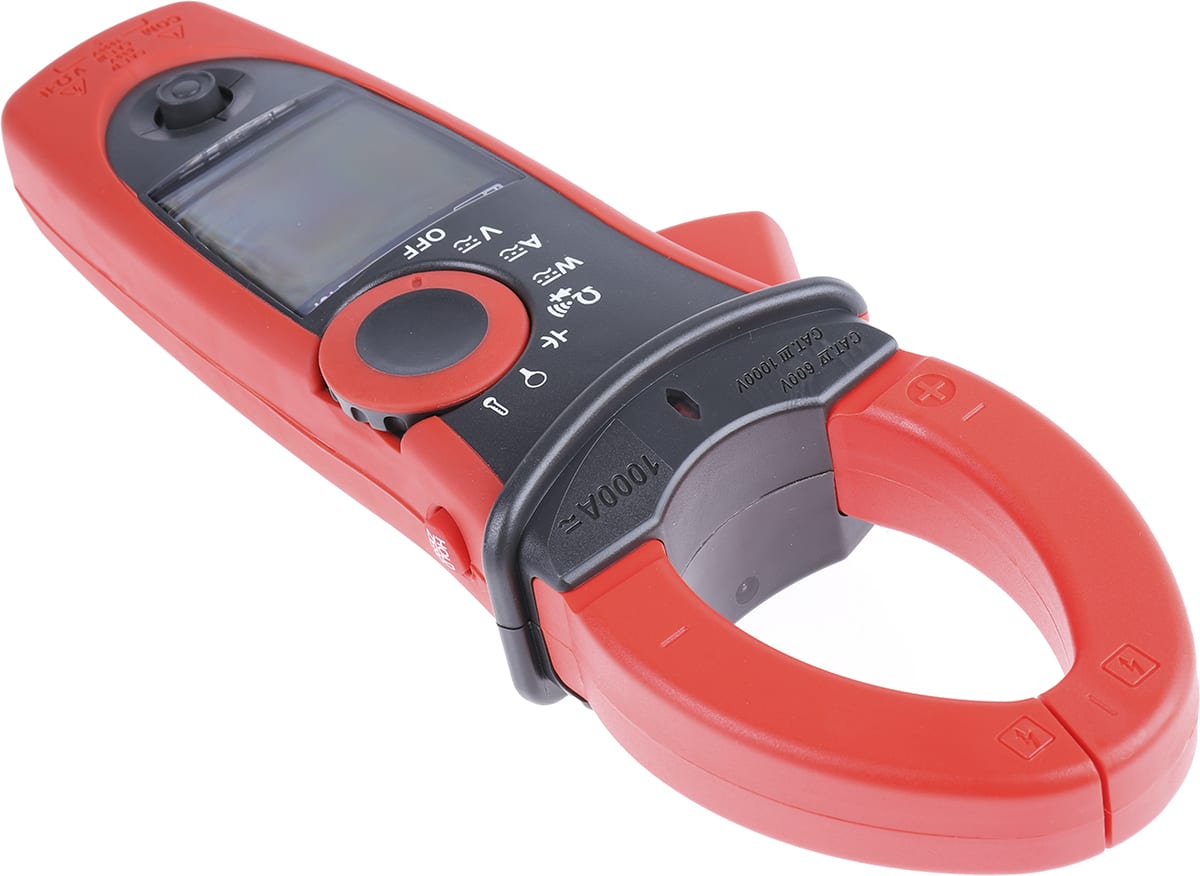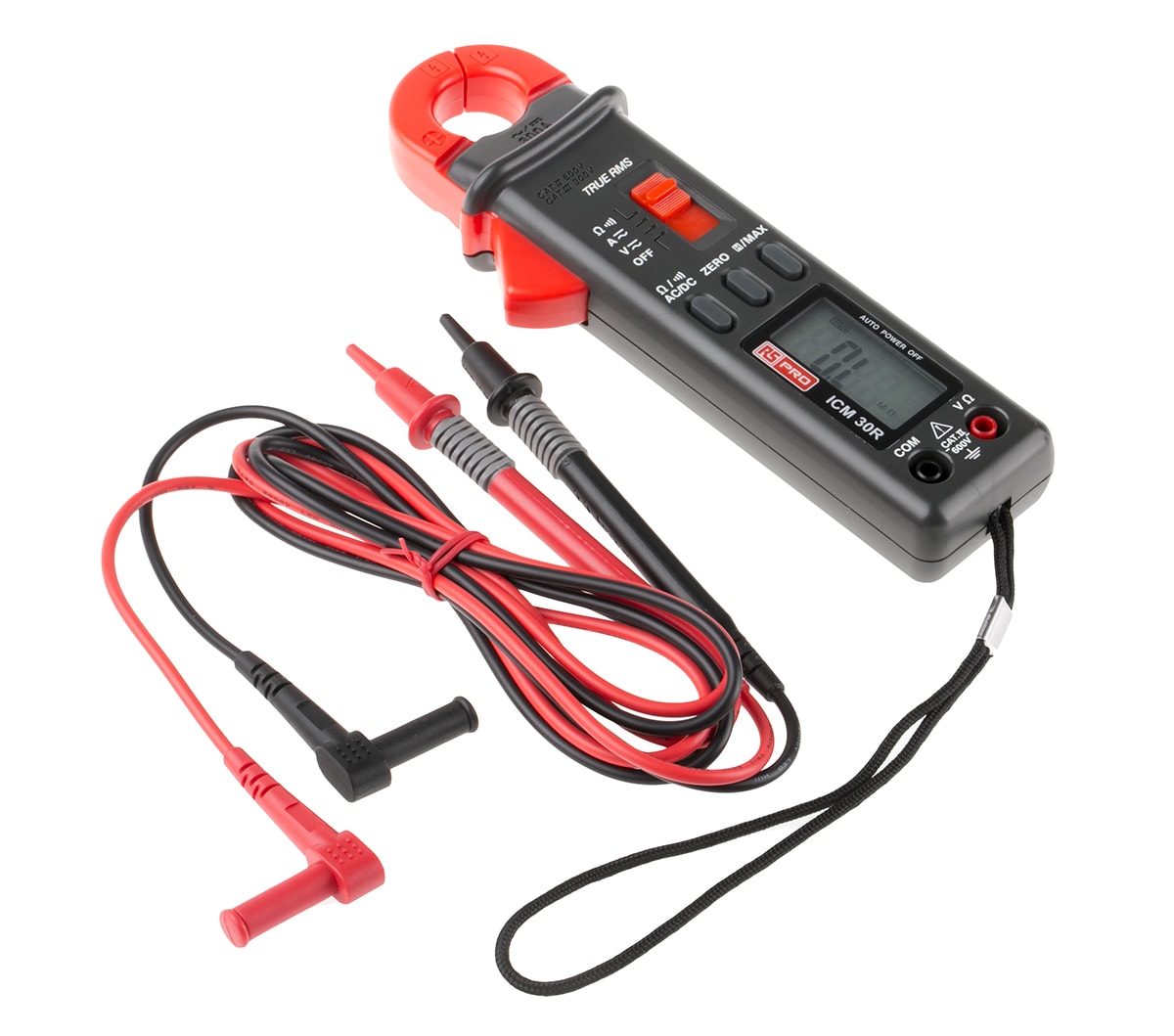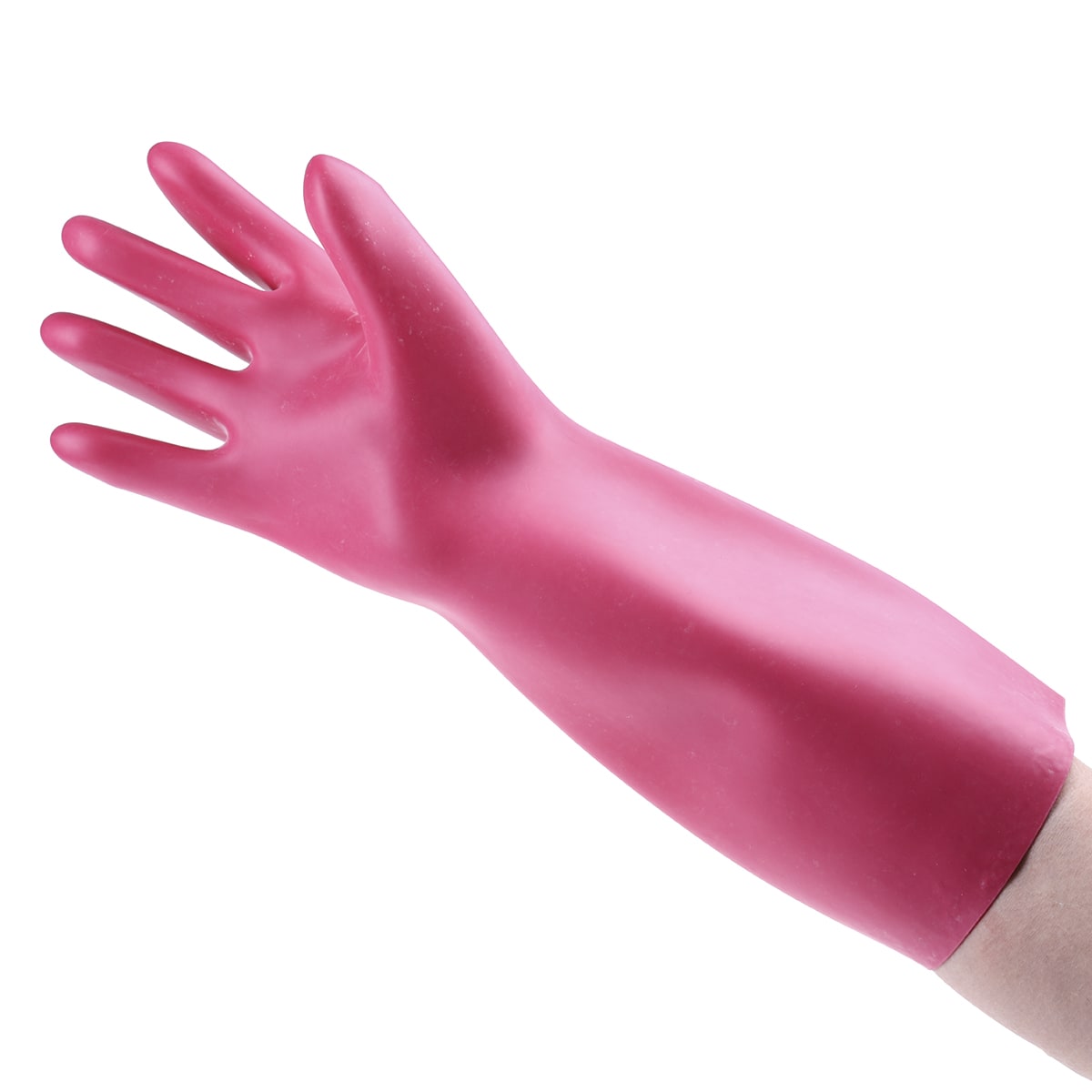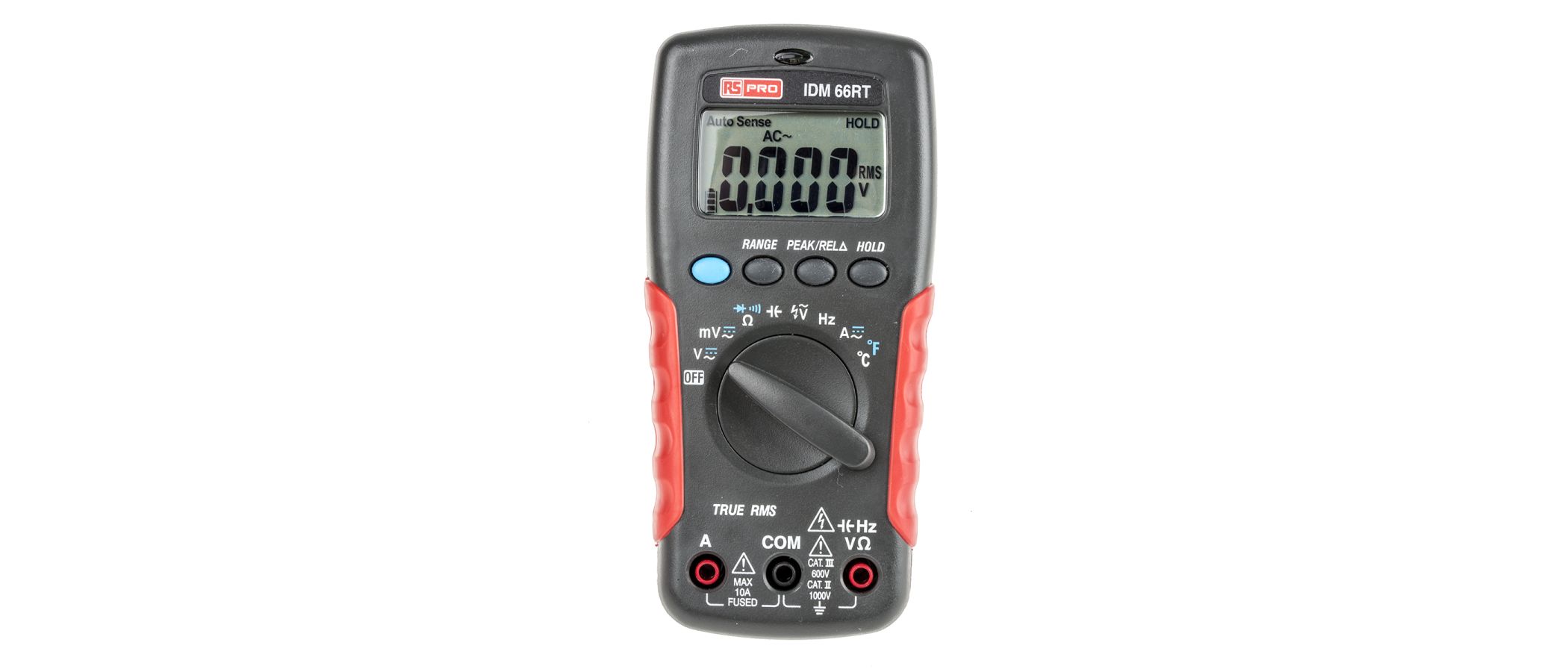What is a Clamp Meter & How Do You Use One?

Published March 2022
In this guide, we'll talk through the clamp meter in depth. What is a clamp meter? How do you use it and how does it work? We'll also cover the primary clamp meter types, their uses and their functions.
So, let's get started and explore the topic in more detail.
What is a Clamp Meter?
Clamp meters are electrical test instruments utilised for measuring current without connection to a circuit in series. They can easily be used and operated to measure live conductors without causing damage or loss of power. In short, they are devices used for safe and convenient current measurement.
Clamp meters are sometimes also known as tong testers. They combine the functionality of a basic digital multimeter with that of a current sensor. The main difference is the addition of the hinged jaw which allows for contact-free measurement of voltage and current.
The jaw can be clamped around wires, cables, or other conductors at any point in an electrical system to detect the current flowing through the conductor. A magnetic field is generated when current flows through a conductor. These devices help with the detection of the magnetic field, enabling the provision of the correspondent current reading. Clamp meters are highly efficient at safely and speedily measuring current, without interrupting the current flow or using test leads.
The clamps measure current such as AC current, AC and DC voltage, resistance, and continuity. Some models can also measure DC current, capacitance, temperature, and frequency.
Although this is the basic principle, some modern devices also feature extra functionality. This includes increased safety measures, features that make analysis and troubleshooting simpler, and functions that enable the measurement of various quantities.
Clamp meters are versatile instruments and an essential addition to an electrician’s toolbox.
Why Would You Need a Clamp Meter?
There are several key reasons why you might need a clamp meter. Their advantages include:
-
Flexibility - Clamp meters offer ease of measurement of current on live circuits, while often including common multimeter functions
-
Increased safety - There is no need to come into contact with live terminals
-
Identification of issues - simple identification of issues when installations occur
-
Convenience of use
-
Cost-effectiveness - for ongoing test, maintenance, and service requirements

Digital Clamp Meter Uses & Functions
The uses and functions of a digital clamp meter are as follows:
-
Unlike multimeters, they offer current measurement without having to break the circuit
-
Some models can be used for power measurement by measuring voltage and current
-
Energy demand monitoring can also be conducted with some models
-
Many instruments also include other basic multimeter functions, such as voltage, resistance and continuity, and temperature measurement
-
Some types are tailored to a specific field of application such as HVAC, for example
-
They are typically designed for use on higher current circuits (over 1A) although some models are also available for low current applications e.g. 4-20mA loops. However, it is worth noting that currents above 10A cannot be measured for more than typically 30 seconds without the meter incurring damage
Clamp meters are widely used in both commercial and industrial environments. Common applications include:
-
Commercial, industrial, residential electrical circuits and HVAC systems
-
Conducting repairs to accessible systems
-
Troubleshooting electrical instrument fixing problems
-
Various technical and engineering tasks such as executing last circuit tests
-
Supervising beginner electricians while fitting electrical instruments
-
It is also used for supervising a beginner electrician while fitting electrical instruments.
-
Both scheduled and emergency maintenance
How Do Clamp Meters Work?
Clamp meters offer a contactless way of measuring AC using the magnetic induction principle. As is the case with any conductor, a magnetic field is produced as a result of the current moving through it. This magnetic field is detected by a Hall Effect sensor as less voltage is created over the sensor.
It is also important to keep in mind that clamp meters only work when a single conductor is passed through the clamp.
Clamp meters have multiple parts. The majority of modern instruments will feature:
-
Jaws – Identify the magnetic field created as a result of the flowing current
-
Jaw Opening Trigger – Used to open and close the jaws
-
Power Switch – The button used for switching the clamp meter on and off
-
Backlight Button – Illuminates the LCD when pressed to allow the display to be read in the dark
-
Hold Button – Holds the displayed value when pressed
-
Negative/Ground Input Terminal – The negative/grounding jack of the meter cable is joined to this cover
-
Positive Input Terminal – The positive jack of the meter cable is joined to this cover
-
LCD Display – The display panel used to show the measurements
-
Functional Rotary Switch – Enables users to select different measurement modes

How to Use a Digital Clamp Meter
Learning how to use a clamp meter is simple. However, it's important that you understand both how a clamp meter works and how best to use it in any given environment.
Please note that the steps below are only applicable for measuring with a digital clamp meter.
-
Switch the meter on and, if attached, remove the probes
-
Using the dial, select either the AC or DC function
-
Open the jaws and place in the conductor you want to measure. Remember you should only measure properly insulated conductors and for safety reasons, never measure around live wires
-
Close the jaws and adjust the conductor to ensure it's level and aligned to the clamp's centre
-
The current reading will show on the display
The process will be slightly different if you are using a clamp meter with a flexible probe. These are ideal for measuring the voltage and current of conductors in tight or difficult to reach areas, where it isn't practical to use the jaws.
In this scenario, you will need to attach the probe's end to the clamp meter before proceeding. The same process can then be followed. The only exception is to ensure the probe is correctly wound and connected to the meter. Make sure you choose the correct function and the measurement will show on the display.
Tips for Measuring with a Clamp Meter
Here are a few handy tips to help:
-
Always wear the correct PPE when operating a clamp meter. Electrical protection safety gloves are essential
-
Never clamp around more than one conductor simultaneously. The current will cancel out if it is flowing in opposite directions
-
It's advisable to use the zero function when you measure DC current to provide more accurate results. This is because this function removes DC offset from the measurement
-
If measuring current with the jaws, make sure you have disconnected the test probes beforehand
-
If your readings appear to be inaccurate, your first step should always be to check the correct function is selected

What is the Arrow for On the Clamp Unit?
This indicates the orientation the clamp should be applied to the conductor, i.e. the arrow points towards the load. This ensures the polarity indicated on the clamp meter is correct for DC measurement. For AC power measurements, this also ensures the correct polarity of the power is indicated.

Different Types of Digital Clamp Meters
There are two main types of clamp meters:
-
Hall Effect Clamp Meter
-
Current Transformer Clamp Meter
Some models measure AC only, whereas others measure DC too. For instance, Hall Effect clamp meters measure both types. Additionally, there are different jaw types available - rigid or flexible. Flexible types are ideal for measuring around difficult to access conductors.
Hall Effect Clamp Meters
AC and DC signals can both be measured with Hall Effect clamp meters. When the jaws are closed around the conductor, they contain a concentrating magnetic field, created as a result of the current flowing through it.
Current Transformer Clamp Meters
Current transformer metering uses two clamps made from Ferrites Iron. These are separately covered with copper coils. They form a magnetic core when combined and the measurements are taken on the surface of this.
Measurement Categories
There are various measurement categories for clamp meters and it is important to choose the correct category for your application.
| Measurement Category | Best Used for |
| Category I | Testing specially-protected internal mains-derived circuits or circuits that are not directly connected to the mains |
| Category II | Testing circuits that are directly connected to low-voltage installations |
| Category III | Testing circuits involved with building installation, such as wiring, circuit breakers, and distribution boards, as well as industrial equipment |
| Category IV | Testing at the source of low-voltage installations, including electricity meters, ripple control units, and overcurrent protection devices |
What to Consider When Choosing a Clamp Meter?
The following are all factors you should consider when choosing a clamp meter:
-
Jaw size is a key consideration. Too small and it won't fit around the conductors you wish to measure. Too large, and you may not get it to fit into the area that the conductors are in. Flexible current probes can be a good option, especially if you wish to measure higher currents e.g. 2,500A
-
Current rating, and whether you wish to measure DC currents
-
Whether you will be measuring non-sinusoidal waveforms, such as variable speed drives, HVAC circuits, or other solid-state environments. If so, true RMS measurement is preferable to ensure more accurate measurements
-
Category rating of circuits
-
Any additional functions you may require, such as power measurement, frequency, continuity, resistance, capacitance, or data logging for energy monitoring purposes
-
Bluetooth capability to share results to a phone app for analysis, or to send to colleagues for review

